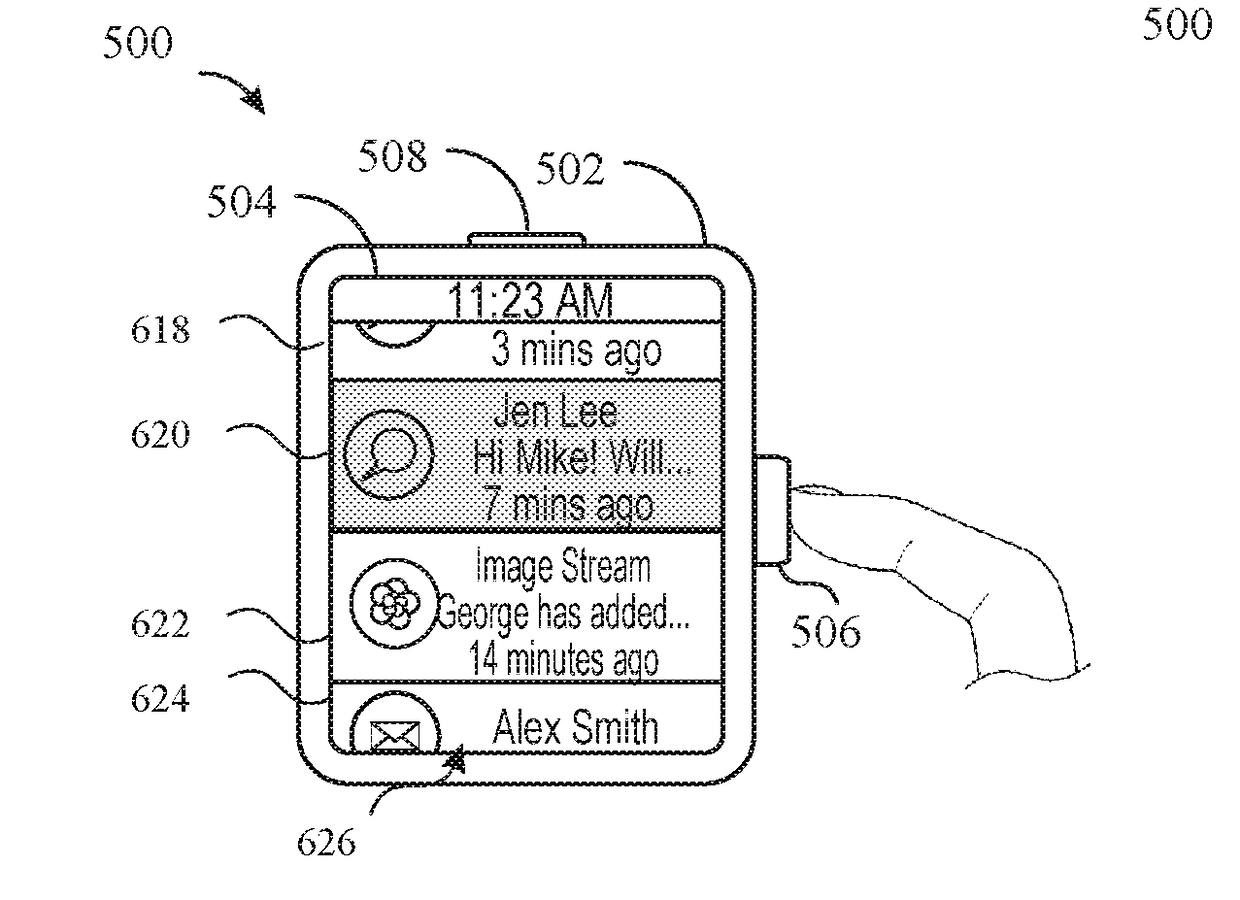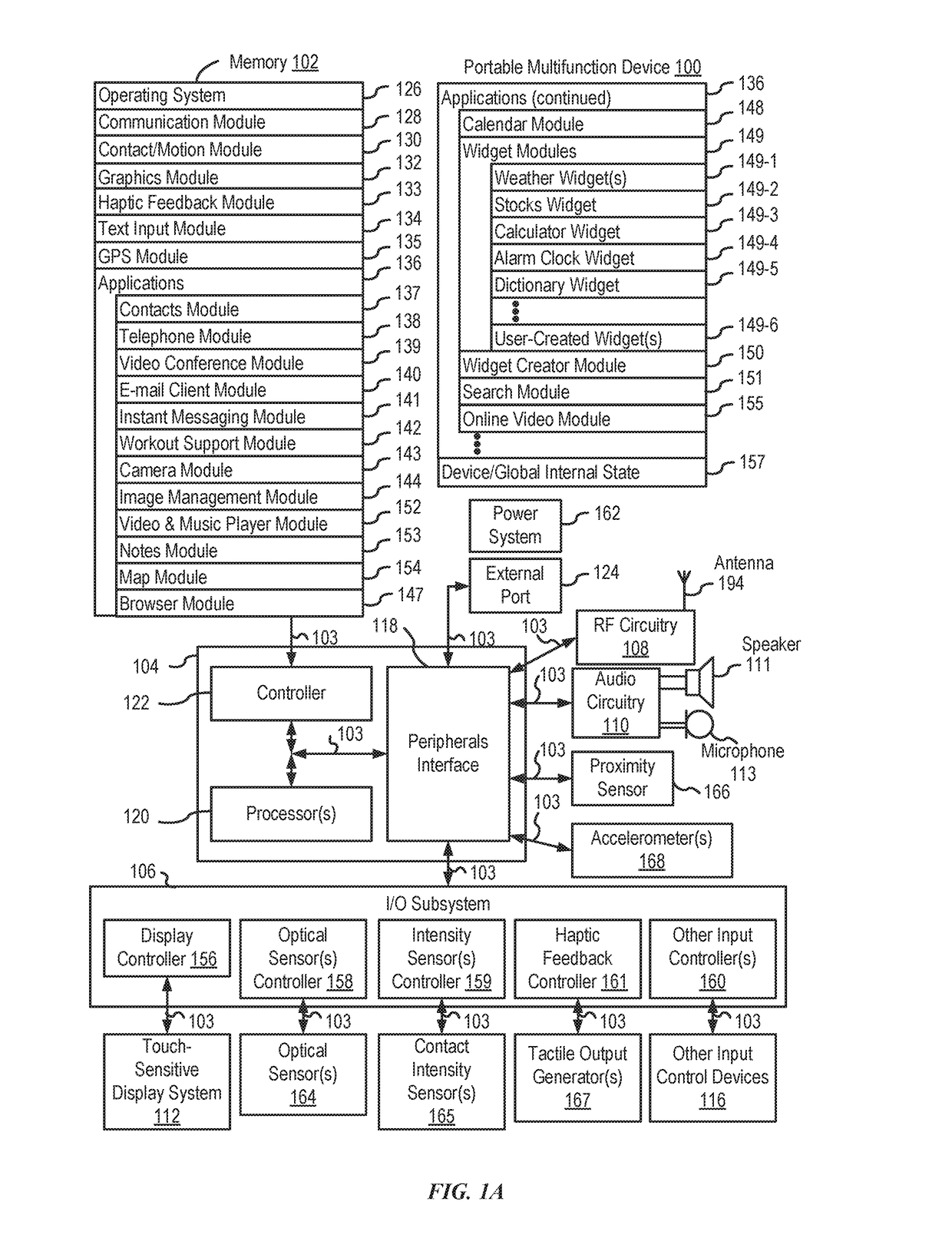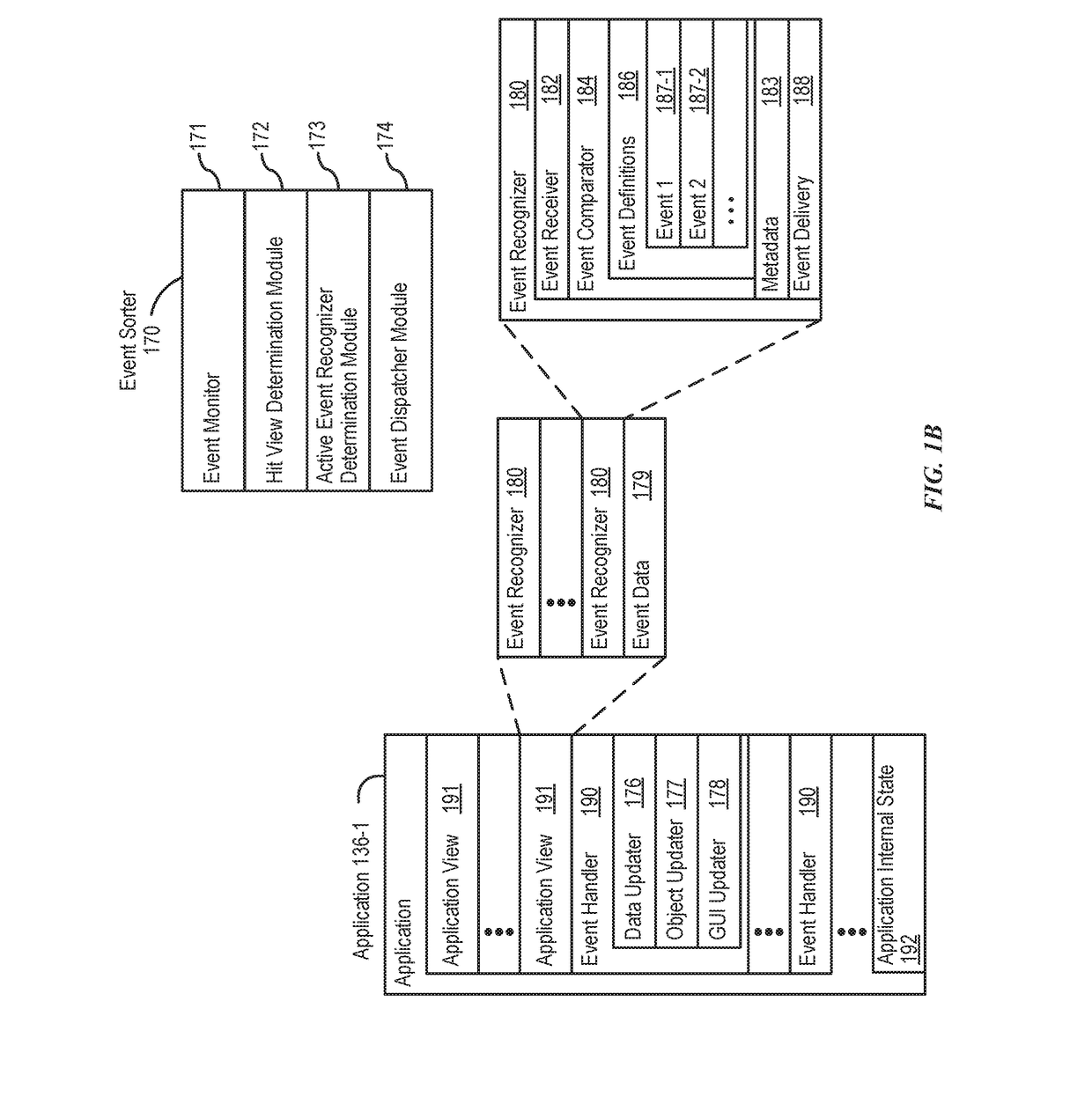Gesture detection, list navigation, and item selection using a crown and sensors
a technology of gesture detection and sensor, which is applied in the field of computer user interfaces, can solve the problems of unattractive solutions for use with reduced-size devices, insufficient user input modes to enable efficient interfaces, and other external input devices such as mice or trackballs, and achieves the effects of improving efficiency, improving efficiency, and improving user satisfaction
- Summary
- Abstract
- Description
- Claims
- Application Information
AI Technical Summary
Benefits of technology
Problems solved by technology
Method used
Image
Examples
Embodiment Construction
[0044]The following description sets forth exemplary methods, parameters, and the like. It should be recognized, however, that such description is not intended as a limitation on the scope of the present disclosure but is instead provided as a description of exemplary embodiments.
[0045]There is a need for reduced-size electronic devices that provide efficient methods and interfaces for navigating lists and selecting an item(s) without requiring the user to touch a touch screen. For example, as discussed above, it can be advantageous for a reduced-size device with a small display screen to allow a user to navigate a list and select an item(s) without having to touch the display and potentially obscure items on the list. A further advantage of allowing the user to provide inputs off of the display is that, in some cases, the device can receive user inputs and respond to them without activating the display, thereby saving power.
[0046]Below, FIGS. 1A-1B, 2, 3, 4A-4B, and 5A-5B provide a...
PUM
 Login to View More
Login to View More Abstract
Description
Claims
Application Information
 Login to View More
Login to View More - R&D
- Intellectual Property
- Life Sciences
- Materials
- Tech Scout
- Unparalleled Data Quality
- Higher Quality Content
- 60% Fewer Hallucinations
Browse by: Latest US Patents, China's latest patents, Technical Efficacy Thesaurus, Application Domain, Technology Topic, Popular Technical Reports.
© 2025 PatSnap. All rights reserved.Legal|Privacy policy|Modern Slavery Act Transparency Statement|Sitemap|About US| Contact US: help@patsnap.com



